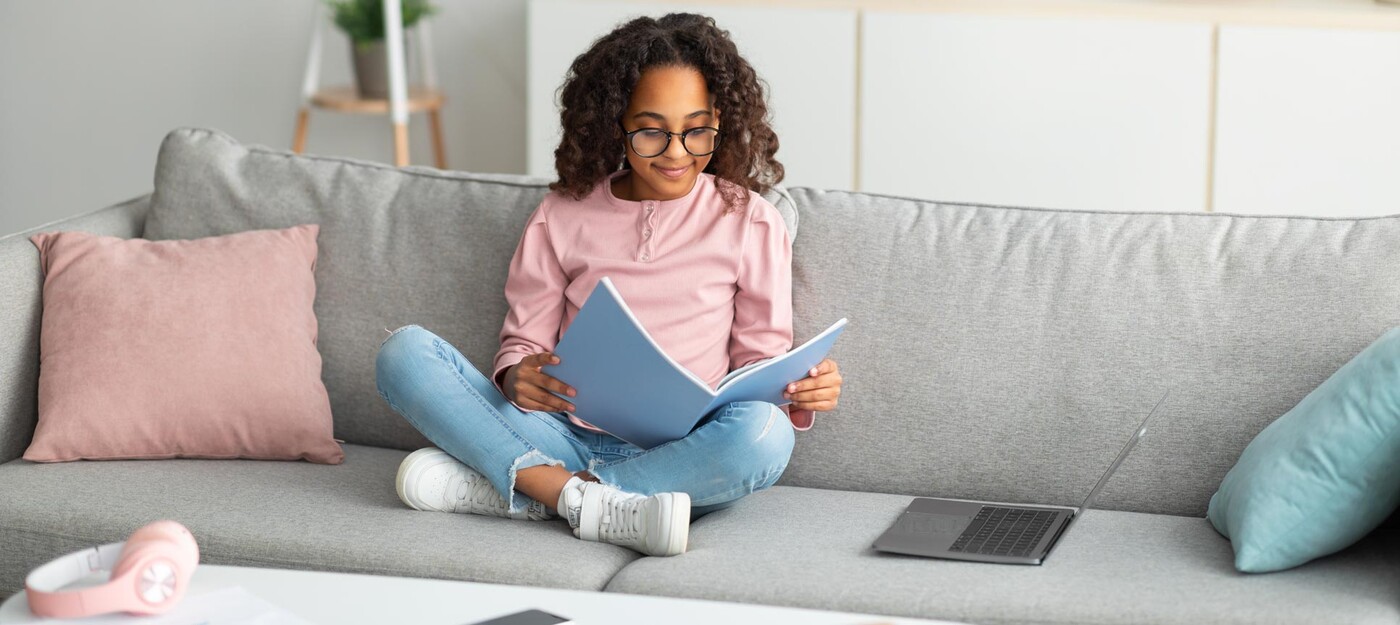Myopia -- or nearsightedness -- used to mean thick glasses, contact lenses, and progressively worsening vision. But that may be changing. Duke Health pediatric optometrists now use specialized soft, multifocal contact lenses, overnight-wear reshaping rigid lenses, and prescription eyedrops to slow the advancement of myopia, providing a new quality of life for your child. That's an important development because as myopia progresses, it can increase your child’s risk of developing serious eye conditions such as macular degeneration, cataracts, glaucoma, and retinal detachment when they are older.
Does My Child Have Myopia?
For people with myopia, distant objects appear blurry, while near objects often look clear. If your child holds books, tablets, or homework close to their face, sits too close to the TV, or squints, they may have myopia. And they would not be alone.
Watch this video to learn about new treatment options for nearsightedness and other ways children with myopia can practice good eye hygiene and care for their eyes.
A Nearsighted Nation
Over 40% of the U.S. urban population has myopia, and it will be half the population in 2050 worldwide, explained Duke pediatric optometrist Qiaohui Wei White, OD MS FAAO. “We’re seeing an increasing number of myopia cases in younger children,” said Dr. Wei White. Children with one or both parents who are nearsighted have a higher risk for developing myopia. Other risk factors such as excessive screen time, close reading habits, and less time in the sunlight may also be to blame.
Prevalence of Digital Devices May Be a Culprit in Increasing Number of Myopia Cases
“How our children use their eyes has changed dramatically in last two decades, and this has amplified the problem”, said Dr. Wei White. “With more children indoors and completing their homework and enjoying their entertainment on screens, we’ve seen an uptick in the progression of myopia.”
Duke Offers Innovative Myopia Treatments
Children who are nearsighted are traditionally prescribed glasses or contact lenses that, in most cases, increase in strength every year. Now, doctors are using low-dose atropine drops -- commonly used to dilate the eyes -- to stop myopia from worsening. Studies show the drops, typically given at bedtime, are slowing the rate of myopia by about half. The rigid overnight wearing lenses, known as orthokeratology, not only provide spectacle-free clear vision during the daytime, studies have also shown they effectively slow the elongation of the eye, the primary cause of myopia progression. Research has also found that children who start wearing multifocal contact lenses as early as age seven experience a slowing of myopia progression as well.
Getting a diagnosis of myopia and starting treatment as soon as possible is one way to stop the condition before vision worsens. Dr. Wei White and her colleagues at Duke’s pediatric myopia clinic at the Duke Eye Center offer longer appointment times and advanced testing to ensure their young patients get the most appropriate, tailored treatments.
So far, families are pleased with the results. “Every child has different needs and responds differently to various treatments, but we do everything we can to slow myopia progression as much as possible, which may mean alternating methods or combining therapies through the process,” said Dr. Wei White. “Because of our experience and strongly specialized team, we strive to be the best place to manage myopia. When you visit Duke Eye Center, you are not only seeing me. We can connect you to the strong team behind us.”




